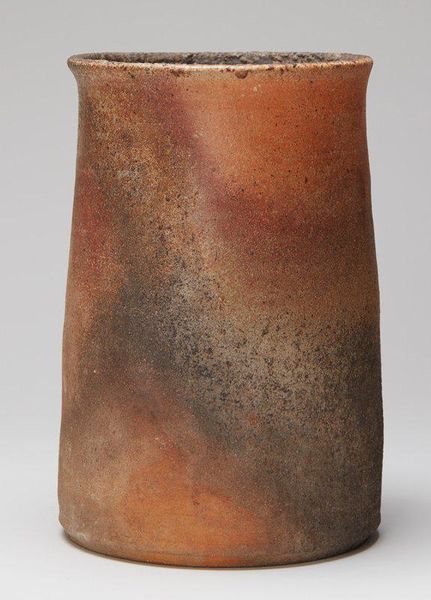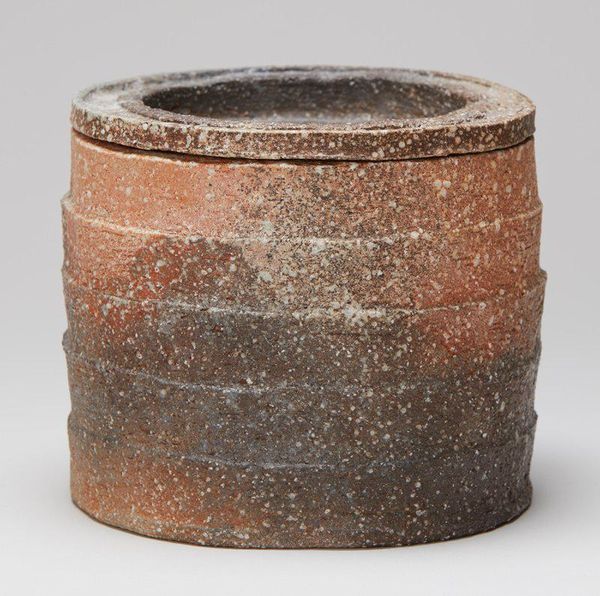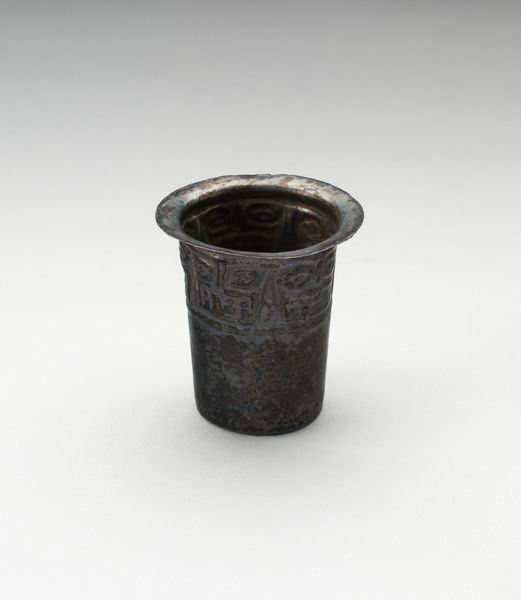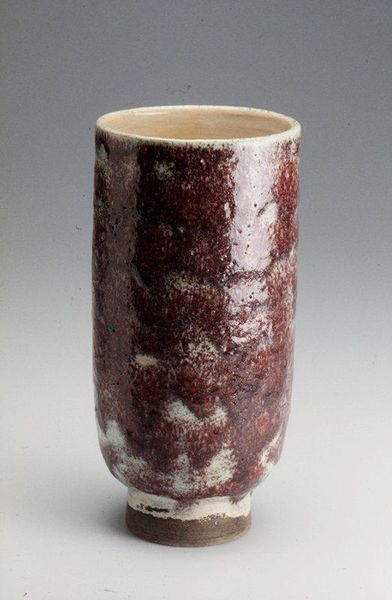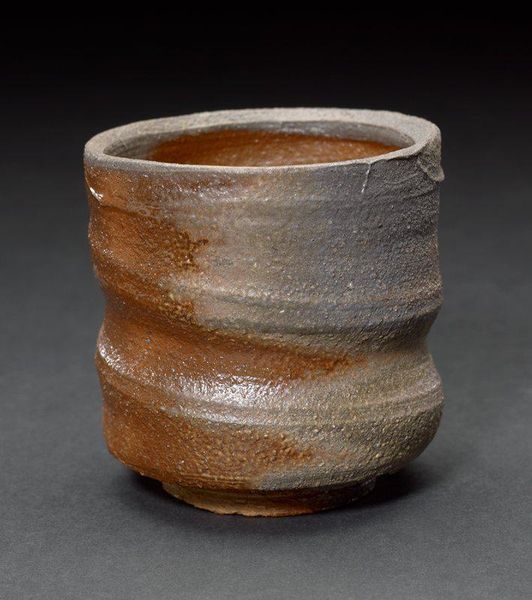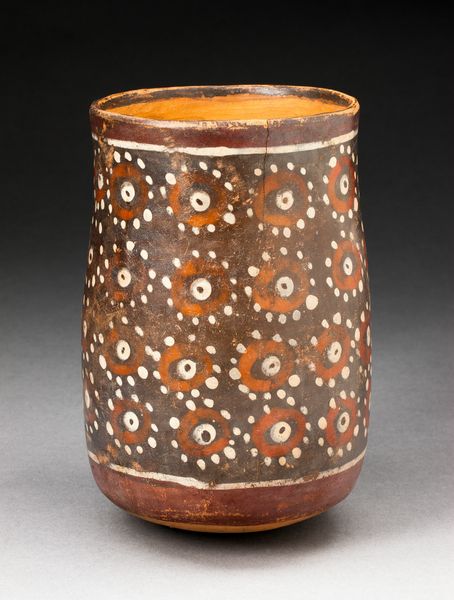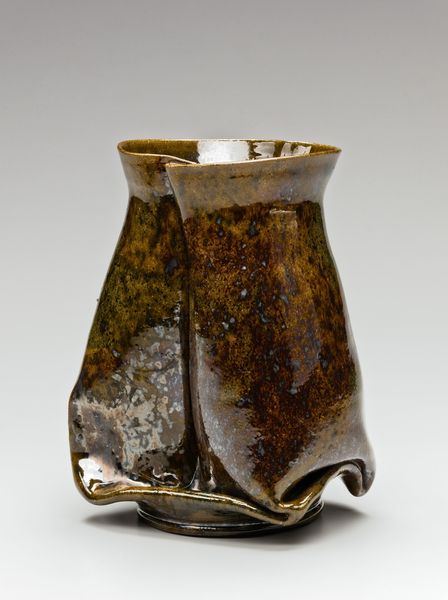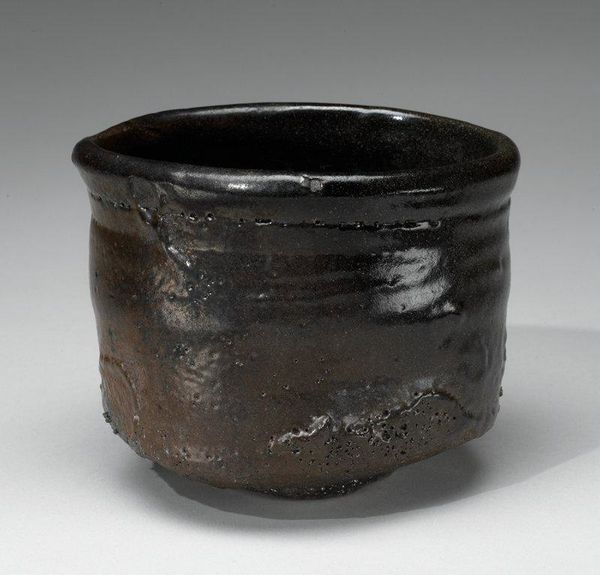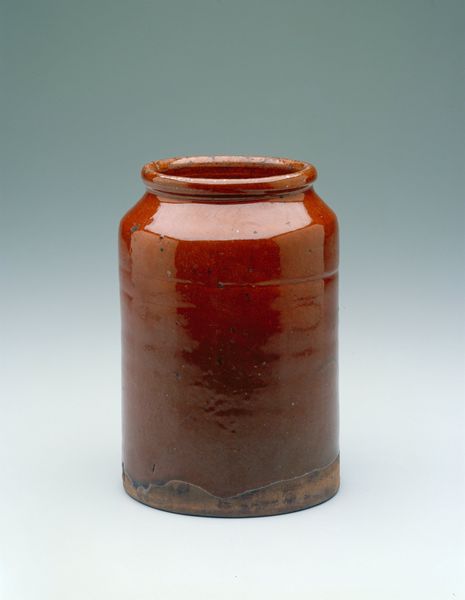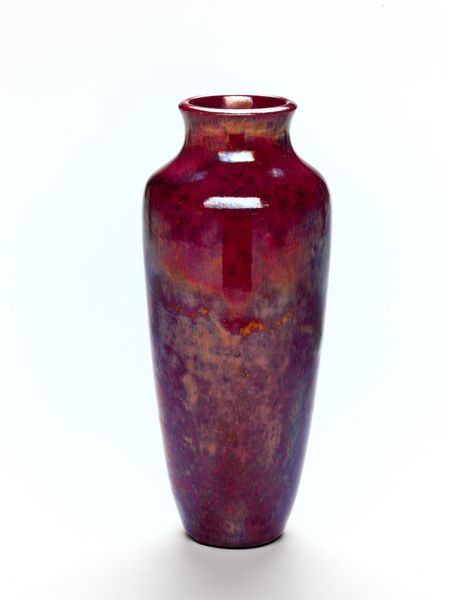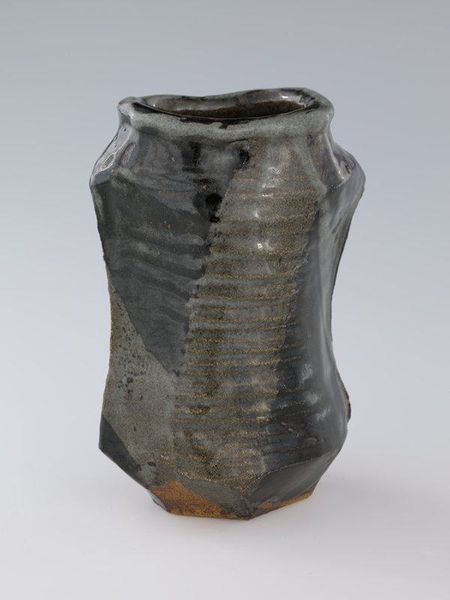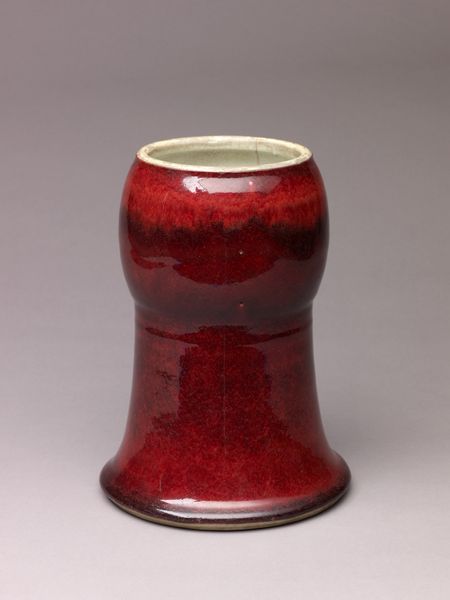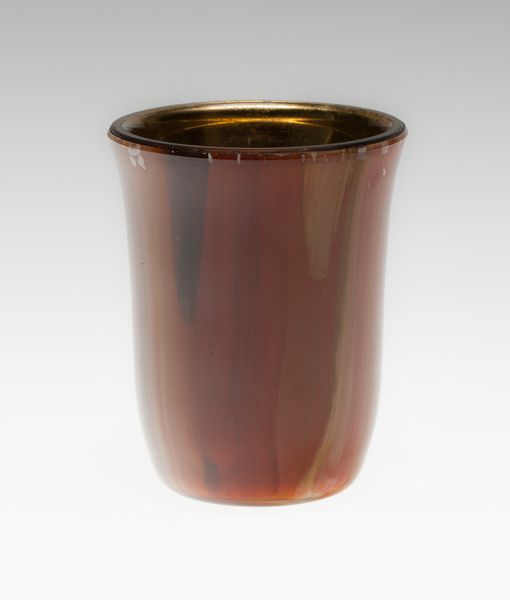
ceramic
#
medieval
#
asian-art
#
ceramic
Dimensions: 8 1/8 x 4 1/2 in. (20.6 x 11.43 cm)
Copyright: Public Domain
Nonomura Ninsei created this vase, or hanaire, during the Edo period in Japan. Born in a transformative era, Ninsei navigated a society marked by both rigid social hierarchies and flourishing artistic innovation. As pottery gained prominence beyond mere utility, artists like Ninsei were instrumental in elevating its status. During this period, the tea ceremony was evolving, becoming entwined with Zen Buddhism and emphasizing harmony, respect, purity, and tranquility. The dark glaze and simple form can be viewed as a move away from opulent styles, aligning with the tea ceremony’s increasing focus on simplicity and wabi-sabi, or the beauty of imperfection. With its textured surface, this hanaire invites contemplation. It reflects a societal shift towards valuing the handmade and the imperfect, where the artist’s hand is celebrated.
Comments
minneapolisinstituteofart about 2 years ago
⋮
Nonomura Ninsei produced refined pottery decorated with colorful enamels and his style exerted enormous influence on other ceramists active in Kyoto during the seventeenth and eighteenth centuries. In addition to this highly decorative style, Ninsei also created a number of works that more closely reflected the subtle styles traditionally associated with the tea ceremony. This tall flower vase reflects his interest in earlier ceramics produced in Seto, near Nagoya. The thick application of iron rich glaze resulted in a deep brown surface and the interesting "accidental" drip effect.
Join the conversation
Join millions of artists and users on Artera today and experience the ultimate creative platform.
